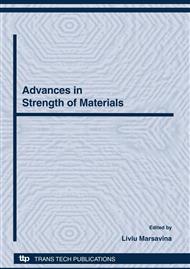p.63
p.71
p.79
p.89
p.97
p.105
p.113
p.123
p.131
Behaviour Analysis of Adhesive Joints Used in Ship Structures
Abstract:
The paper describes the results from mechanical testing and numerical analyses for the adhesive joints used in ship structures. The work undertaken in the numerical and experimental tests of different connections (steel-glass fiber polyester resin; steel - Carbon fibre epoxy) is summarized. The numerical nonlinear calculus is done due to the nonlinear properties of the adhesive and also due to the nonlinear behaviour of the adhesive joint.
Info:
Periodical:
Pages:
97-104
Citation:
Online since:
October 2008
Authors:
Keywords:
Price:
Сopyright:
© 2009 Trans Tech Publications Ltd. All Rights Reserved
Share:
Citation:


